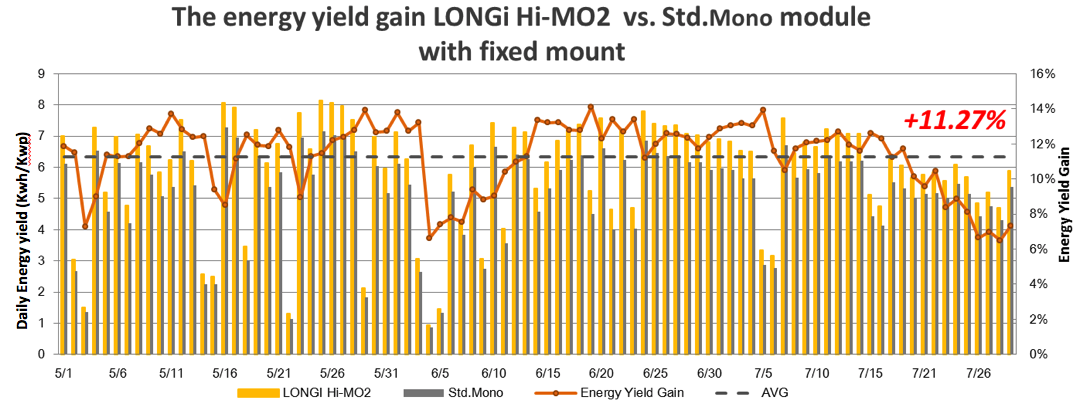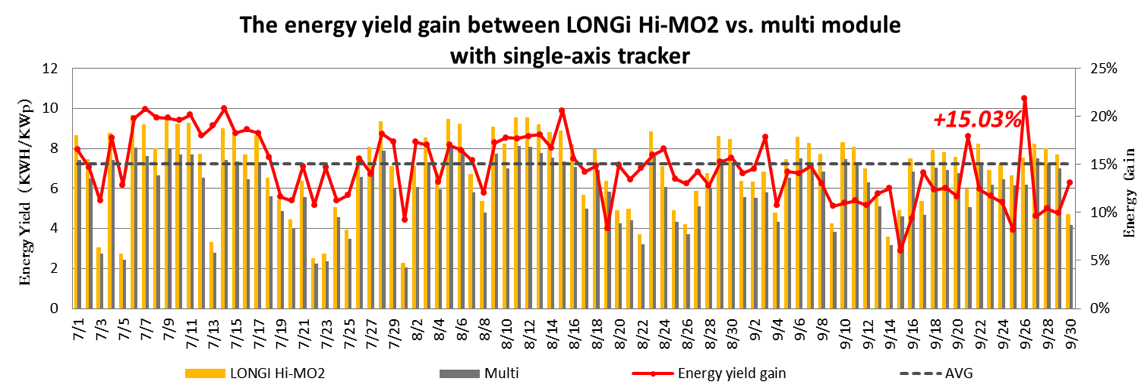Solar developers and PV power plant operators are primarily looking at the lowest possible cost of electricity generation (LCOE) - and bifacial technology is the perfect means to increase the power output gain at the system level without any additional cost as high-efficiency monocrystalline PERC solar cell technology is bifacial by nature. Depending on the reflection capabilities of the ground on which a bifacial system is installed (so called albedo), it can generate a 10 to 30% higher yield than a traditional monofacial solar system.
As there are only few bifacial systems that have been operating for longer periods, and even more, installed at the same site as monofacial systems, LONGi Solar, the leading vertically-integrated manufacturer of monocrystalline PV modules, has started in 2017 to build and test bifacial system performance in comparison to traditional monofacial module technology under real-life conditions.
Higher Yield for Bifacial Mono
A 18.9 kW PV system using its 350 W Hi-MO2 bifacial modules and a 18.48 kW system using standard monocrystalline modules with a power rating of 280 W were both installed using fixed ground-mount systems on dry soil in Pucheng, China. After the first 3 months of testing, the bifacial module showed already a 11.27% higher average energy yield than the monofacial system.

Bifacial Gain: After the first 3 months of testing, the PV system using LONGi´s 350 W bifacial modules showed already a 11.27% higher average energy yield than the monofacial system.
Mono Beats Multi – with Trackers Propelling Bifacial Advantage
To test the effect of tracking systems on the performance of bifacial solar technology and compare mono- and multicrystalline cells, a 336 kW PV system using LONGi´s Hi-MO2 PERC bifacial modules was installed next to a 5 MW system using multicrystalline modules – both on single axis trackers. After the first 3 months at the test site in Kubuqi, China, the monocrystalline PERC module based bifacial system showed a 15% higher energy yield compared to a PV system with multicrystalline module.

Mono beats multi: Compared to a traditional one-side producing multicrystalline modules based PV system, a bifacial installation using LONGi´s mono cells showed a 15% average higher energy yield in the first 3 months of the test, whereas both module types are installed on single-axis trackers.
Conclusions
The initial test results of LONGi Solar clearly indicate that opting for monocrystalline PERC bifacial technology is a simple way to improve system yield by a 2-digit amount and thus reduce costs of solar energy generation. LONGI Solar will continue to monitor bifacial system technology and will install further test systems in the future.